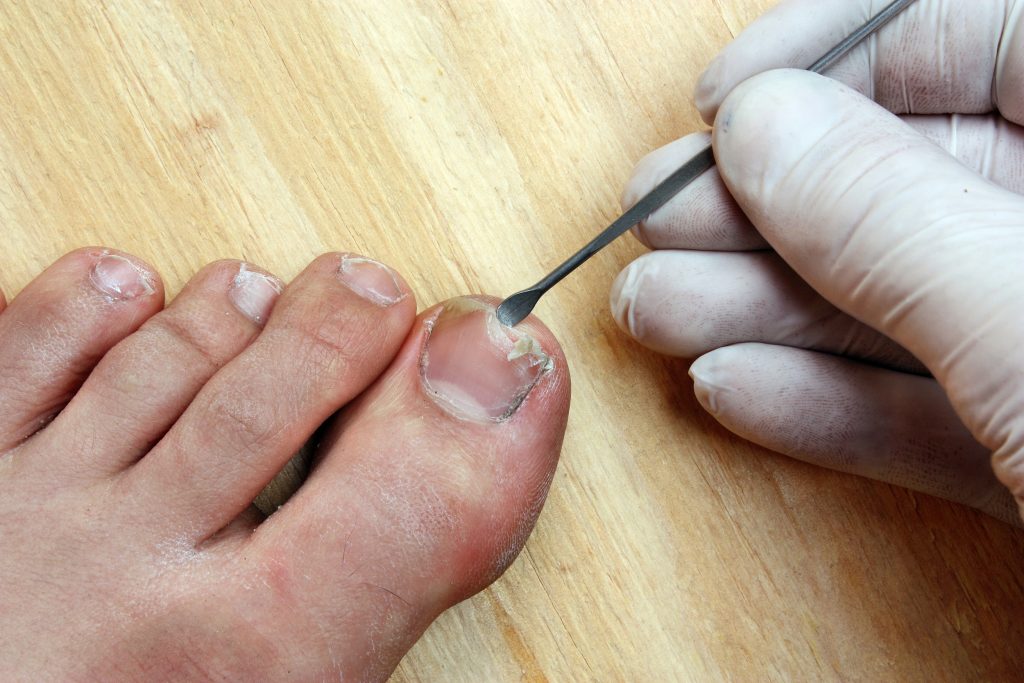Ingrown Toenail
Ingrown Toenail
Ingrown toenails, a common podiatric condition, occur when the edge of a toenail grows into the surrounding skin instead of over it. This painful condition, known as onychocryptosis, often affects the big toe and can cause discomfort and discomfort for individuals of all ages. Understanding the causes, symptoms, and treatment options for ingrown toenails is crucial for maintaining foot health.
Causes
Ingrown toenails can develop for various reasons. One of the most common causes is improper toenail trimming. Cutting toenails too short or rounding them instead of cutting them straight across can encourage the nail to grow into the skin. Wearing tight-fitting shoes or high heels that put pressure on the toes can also increase the risk of ingrown toenails. Additionally, injuries to the toe, such as stubbing it or dropping something heavy on it, can lead to ingrown nails. Sometimes, fungal nails cause ingrown toenails because of this acquired thickness. In some cases, individuals with inherited nail shape like pincer nails may be more prone to developing ingrown toenails.


Symptoms
Recognizing the symptoms of ingrown toenails is essential for early intervention and prevention of complications. Common signs of an ingrown toenail include pain and tenderness along the affected side of the nail, redness and swelling around the nail, and potential drainage of pus if infection sets in. As the condition progresses, it can become more painful, making it difficult to wear shoes comfortably or even walk without discomfort. In severe cases, untreated ingrown toenails can lead to infection, which may require our attention.
Prevention
Preventing ingrown toenails is often easier than treating them. Proper nail care is essential, and this includes trimming toenails straight across and not too short. Avoiding tight-fitting shoes, especially those with pointy toes, can also reduce the risk of ingrown toenails. Opt for footwear that provides ample space for your toes to move comfortably. If you have a history of recurrent ingrown toenails or an inherited nail shape that makes you more susceptible, please book an appointment with us for preventive measures, we will help you see the bigger picture.
Treatment
Conservative Approach
Prompt and appropriate treatment is key to managing ingrown toenails effectively. In mild cases, patients can try some home remedies to alleviate discomfort. Soaking the affected foot in warm, soapy water for 10-15 minutes a few times a day can help reduce inflammation. After soaking, gently lift the edge of the ingrown nail using a sterile cotton ball or dental floss to place a small piece between the nail and the skin, encouraging the nail to grow correctly. Wearing open-toed shoes during this time can help reduce pressure on the toenail.
Surgical Approach
For more severe cases or if infection is present, seeking our help is crucial. It all depends on many factors, but a minor surgical procedure to remove the ingrown portion of the nail can be a necessity in some cases. This procedure is typically done under local anesthesia and involves removing a small part of the nail and sometimes the underlying nail root to prevent regrowth. In case of infection, antibiotics will be needed.
Practicing good nail hygiene, wearing comfortable shoes, and seeking prompt professional help when needed can help keep ingrown toenails at bay and ensure the health and comfort of your feet. If you suspect you have an ingrown toenail or are experiencing symptoms, don’t hesitate to reach out to us.

